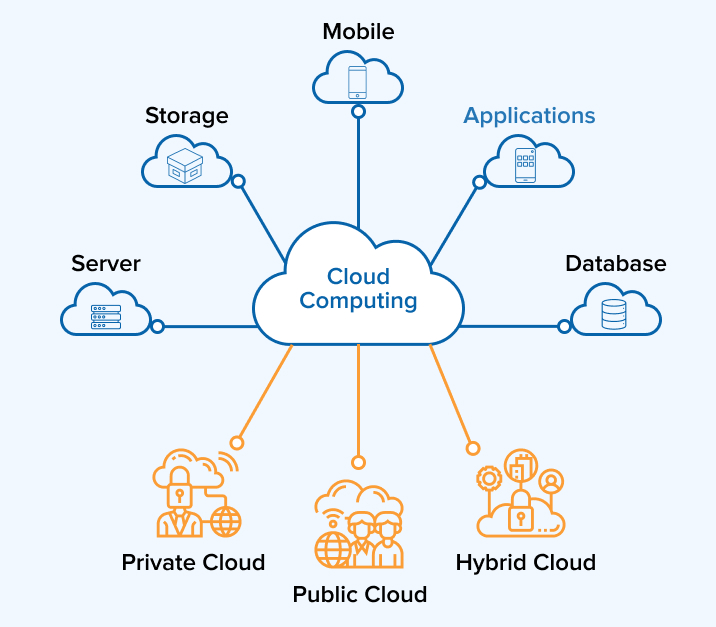Discover LinkDaddy Cloud Services for Universal Cloud Service Success: Press Release Insights
Wiki Article
Simplify Your Facilities With Cloud Services
As organizations navigate the ever-evolving landscape of technology and information management, the duty of cloud services in simplifying infrastructure has actually come to be increasingly noticeable. How can businesses successfully navigate this transition and genuinely unlock the possibility of cloud services for simplifying their framework?Benefits of Cloud Provider
Cloud solutions offer a structured approach to managing IT framework, providing services with scalability, cost-efficiency, and versatility. Among the vital advantages of cloud services is the scalability they offer. Organizations can quickly scale their resources up or down based on demand, guaranteeing they just spend for what they utilize. This flexibility is especially beneficial for businesses with rising and fall needs or those experiencing growth.Furthermore, cloud services get rid of the demand for organizations to buy costly equipment and software application. This cost-efficiency is a substantial benefit, specifically for tiny to medium-sized enterprises looking to lessen ahead of time costs. By utilizing cloud services, companies can access top quality IT sources without the large price tag connected with traditional facilities arrangements.
Additionally, cloud services provide organizations with the versatility to access their information and applications from anywhere with an internet connection. This level of accessibility improves collaboration amongst groups, enables remote job, and raises overall efficiency. The adaptability used by cloud services empowers businesses to adapt promptly to changing market problems and consumer needs.
Price Cost Savings and Scalability
In enhancement to the operational advantages highlighted earlier, the assimilation of cloud solutions right into a business's framework generates substantial expense savings and improved scalability. Cloud services offer a pay-as-you-go version, enabling businesses to scale sources up or down based on existing needs, thus avoiding the costs connected with preserving excess capacity. This versatility makes it possible for business to adjust promptly to varying needs without incurring unnecessary expenditures.Additionally, cloud services get rid of the requirement for upfront financial investments in equipment and software, minimizing capital investment. General expenses are also reduced as companies no more require to take care of and maintain physical servers, resulting in lower energy consumption and IT staffing expenses. Furthermore, cloud solutions give automatic updates and upkeep, making certain that the facilities continues to be up-to-date and secure without requiring hands-on treatments.
Boosted Protection Measures
Carrying out stringent safety steps is critical when integrating cloud solutions right into a firm's facilities to make sure and safeguard sensitive data compliance with sector regulations. Cloud provider provide boosted security features such as data security, firewall security, and multi-factor verification to mitigate cybersecurity risks. File encryption aids secure data both at remainder and en route, guaranteeing that only accredited customers can access sensitive information. Firewalls work as an obstacle in between exterior threats and internal networks, surveillance and managing outgoing and incoming network website traffic. Multi-factor verification includes an added layer of safety and security by requiring users to offer multiple kinds of confirmation before accessing the cloud solutions.Furthermore, normal protection audits and compliance assessments aid make certain and determine vulnerabilities adherence to industry standards. Companies can additionally profit from functions like automatic protection updates and real-time hazard surveillance provided by cloud service providers. By focusing on protection measures and remaining aggressive in attending to prospective risks, services can confidently take advantage of cloud services while protecting their valuable data from unauthorized accessibility or violations.
Transitioning to Cloud Infrastructure
To efficiently integrate cloud services right into a firm's facilities, a structured technique that attends to the shift towards cloud-based options is imperative. Transitioning to cloud framework involves cautious planning and execution to make certain a smooth migration procedure - universal cloud Service.Once the analysis is total, a movement approach ought to be developed. This strategy must outline the timeline, sources, and responsibilities for moving each component to the cloud. It is necessary to interact this plan plainly to all stakeholders to make sure alignment and lessen interruptions during the transition.
During the movement testing, process and tracking are essential to recognize and attend to any kind of problems immediately. Routine checkpoints should be established to track progression and make needed modifications. Additionally, training for workers on utilizing cloud solutions ought to be provided to make certain a successful transition and take full advantage of the advantages of the brand-new framework.
Finest Practices for Cloud Adoption
Effective adoption of cloud services rests on the tactical placement of organization objectives with technical capacities and business preparedness. To make sure a smooth shift to the cloud, companies must begin by carrying out a detailed analysis of their present infrastructure and recognizing which work are best matched for cloud migration. It is critical to involve essential stakeholders from various divisions in the decision-making procedure to obtain buy-in and deal with any worries early.An additional finest practice for cloud fostering is to focus on safety and security and compliance. Organizations must meticulously assess the protection procedures supplied by cloud solution suppliers and ensure that their data is protected according to market requirements and regulatory requirements. Executing robust data security, accessibility controls, and normal security audits can assist alleviate risks related to cloud adoption.

Conclusion

As organizations navigate the ever-evolving landscape of technology and data administration, the duty of cloud solutions in streamlining facilities has actually ended up being progressively noticeable - linkdaddy cloud services. How can services efficiently browse this change and absolutely unlock the capacity of cloud solutions for simplifying their facilities?
Cloud services offer a streamlined strategy to managing IT framework, giving organizations with versatility, scalability, and cost-efficiency. By using cloud solutions, services can access premium IT resources without the substantial cost tag linked with standard infrastructure configurations.
To ensure a smooth transition to the cloud, organizations must begin by carrying out a thorough assessment of their current facilities and recognizing which workloads are best fit for cloud movement.
Report this wiki page